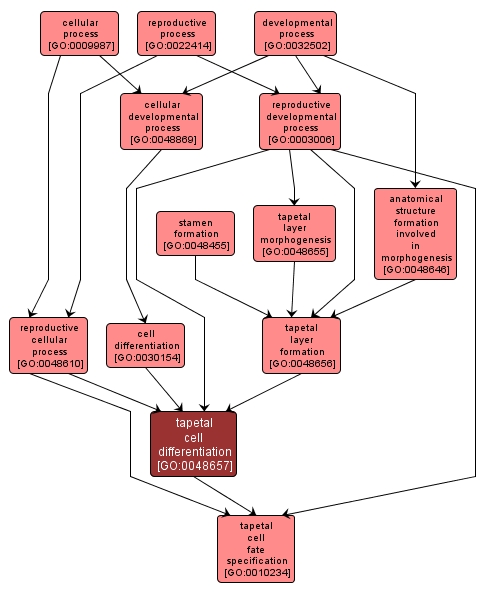GO TERM SUMMARY
|
| Name: |
tapetal cell differentiation |
| Acc: |
GO:0048657 |
| Aspect: |
Biological Process |
| Desc: |
The process whereby a relatively unspecialized cell acquires specialized features of a tapetal cell. The tapetum is a layer of cells that provides a source of nutrition for the pollen grains as they mature. |
|

|
INTERACTIVE GO GRAPH
|














